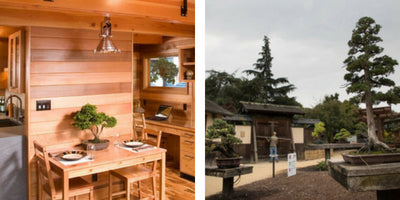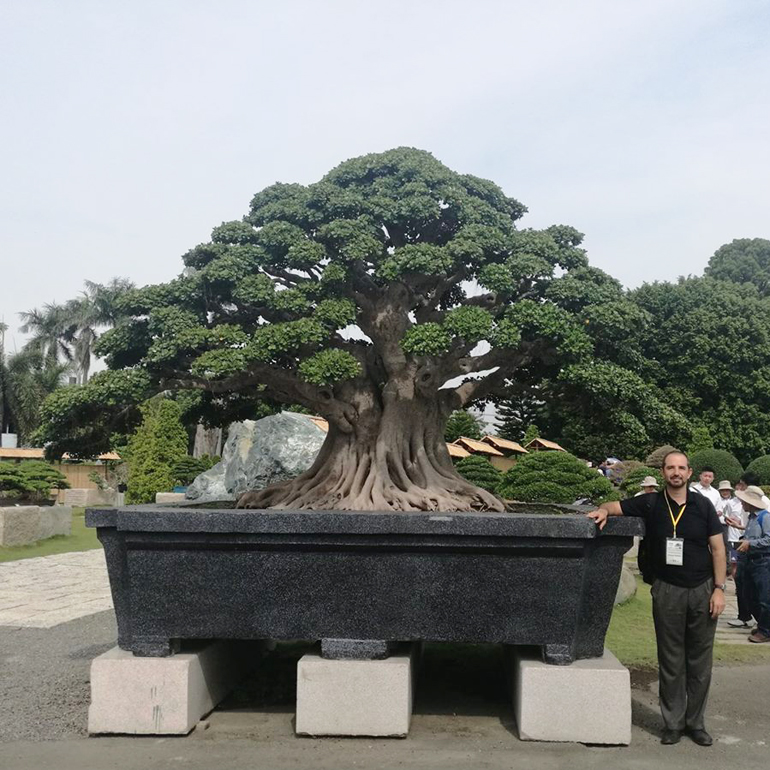THE BONSAI TREE originated from China about 2,000 years ago, with the Japanese making the most developments in terms of style and techniques in propagation. Various results and forms can be achieved depending on the level of patience and care by the artist. There are many different types of bonsai tree you can choose from. In general, you can classify them as Indoor and Outdoor types. For instance, the Ficus is one of the most popular indoor type variety. Understanding the different needs, developmental pattern, and how to care for different types will help you make an informed decision on the best type of bonsai for you.
By Type

Indoor Bonsai Type: This is a type of bonsai that can live in indoor conditions. Species from tropical and subtropical plants make for good indoor bonsai trees. These types of bonsai are suitable for display in your office or as part of your home décor. They can strive in indoor environments as long as they are properly maintained and given enough nutrients consistently.
The most popular indoor types include:
- Fukien Tea Tree (Carmona macrophylle)
- Chinese Elm (Ulmus parvifolia)
- Chinese Snow Rose Or Serissa (Serissa foetidaor Serissa japonica)
- Chinese pepper (Zanthoxylum piperitum)
- Chinese bird plum (Sageteria theezans)
- Baby Jade (Crassula portulacea)
- Willow Leaf Fig or Narrow Leaf (Ficus salicifolia)
- Bougainville (Bougainvillea) or Paper Flower
- Good Fortune Tree or Money Tree (Pachira aquatica)
- Buddhist Pine (Podocarpus Chinese Yew)
- Chinese Privet (Ligustrum nitida)
- Sacred Bamboo (Nandina domestica)
Outdoor Bonsai Type: This type of bonsai prefer an open environment to grow. They can be further divided into 2 main categories: Deciduous and Evergreen. Deciduous bonsai tends to fall off its leaves during fall season, and grow their leaves back during spring. They undergo dormancy period during winter days. Evergreen bonsai can keep its leaves throughout all four seasons but during winter they undergo dormancy, resulting in their leaves turning dull green or yellowish. Outdoor bonsai require adequate care and sufficient nutrients in order to remain healthy and grow beautifully.
The most popular outdoor types include:
Deciduous plants:
- Maples
- Gingko
- Elms
- Larch
- Crabapple
- Apricot
- Hornbeam
- Gingko
- Elm species
Evergreen plants:
- Junipers
- Pines
- Boxwoods
- Azaleas
By Size
While there are over 10 size classifications, the 3 general sizes are Miniature, Medium, and Large.
Tiny/Mame/Miniature

These types grow between four to eight inches in height. They are the smallest among bonsai trees and are also known as one-handed trees because you can hold them in the palm of your hands. These are perfect as home décor if you’re planning to get indoor bonsai.
Medium

These usually require 2 hands to move around and are more suitable for placement in yards and outdoor gardens. There are the most common tree sizes bonsai lovers get because they are easy to work with, being neither too small to prune nor too large to handle. They grow between sixteen and thirty-six inches in height.
Large/Imperial

These are also known as six hand trees because it takes three or even more people to move the tree in its pot. They usually grow between forty and sixty inches tall. Certain types such as the Imperial are the largest and most majestic bonsai trees of all, and can reach eight inches tall.
Conclusion
The basic techniques of training and care for bonsai is similar, although they can be classified into many different types. All types need to be carefully pruned, wired, watered, and trained to make they grow in the proper shape and size you desire. For smaller bonsai like mame, you need to pay extra attention when carrying out pruning exercises. Cultivating a bonsai into a piece of traditional art requires proper technique and attention and it’s up to you, the enthusiast to discover the best type for you.
Check out our range of bonsai trees, kits, fertilizers, and sets.


